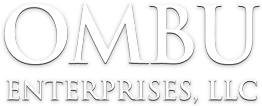At a recent FDA News conference I asked Kimberly Trautman, FDA’s expert on QSR, if FDA has any plans to update QSR based on the changes to ISO 9001 and ISO 13485. QSR dates from the element approach (in ISO 9001:1994), but the ISO standards now employ the process approach. Her answer surprised me. FDA may consider updating QSR after the next round of changes to ISO 9001 and ISO 13485. She explained that ISO plans extensive changes in 9001 for 2014 or 2015. Moreover the new version of 13485 must reflect the changes in 9001. She said that the 9001 changes may include many of the techniques employed in the automotive industry, meaning that will also be in a subsequent 13485 revision and applied to the medical device industry.
The planning process for ISO 9001 is underway. ISO/TC 176, who is responsible for ISO 9001, is soliciting input with a survey. Recognizing the link between 13485 and 9001, you should take the survey. The link is http://isotc.iso.org/livelink/livelink/fetch/2000/2122/-8835176/-8835848/8835872/8835883/9841934/customview.html?func=ll&objId=9841934&objAction=browse
While the survey is broad it asks some very interesting questions. One relates to format and asks the respondent about the format. The choices are:
Option A – Leave ISO 9001 unchanged – re-confirm “as-is” for a future five years (to approximately 2018).
Option B – Revision of ISO 9001 – based on the suggestions for change given in this survey, produce one revised ISO 9001 standard, where all requirements remain equally mandatory.
Option C – Leave ISO 9001:2008 unchanged but also develop another standard with an enhanced (higher level) set of Quality Management System requirements for sustained success that can be used for certification/registration.
Option D – Leave ISO 9001:2008 unchanged but also develop another standard with a reduced (lighter version) set of requirements that can be used for certification/registration of organizations providing low-risk products.
Option E – Replace ISO 9001:2008 with a series of three documents (Quality Management System 1, Quality Management System 2, Quality Management System 3) with higher, middle and lower set of requirements that can be used for certification/registration depending on the risk and criticality associated with the organization’s products.
Option F – Replace ISO 9001:2008 with a single standard, that would include a much broader range of higher and lower sets of requirements, allowing organizations a greater choice depending on risk and criticality associated with the organization’s products.
Option G – Replace ISO 9001:2008 with a single standard including a full range of higher, middle and lower sets of requirements, with points-based maturity assessment.
In addition, there is a question about the techniques to include. The choices here are:
- Supporting Quality Tools (for example Six Sigma, Lean, Statistical Process Control)
- Financial resources of the organization
- Innovation
- Integration of Risk Management
- Knowledge Management
- Life Cycle Management
- Strategic Planning
- Measures (examples are performance, satisfaction, return on investment) Measures (examples are performance, satisfaction, return on investment)
- Systematic problem solving and learning
- Voice of the Customer
- Use of technology to develop and implement the requirements of the standard
- Use of technology to run your business
- Self-assessment tool
The survey gives a link to an explanation of the concepts.
http://isotc.iso.org/livelink/livelink/fetch/2000/2122/138402/755901/1069636/8579854/customview.html?func=ll&objId=8579854&objAction=browse&sort=name
